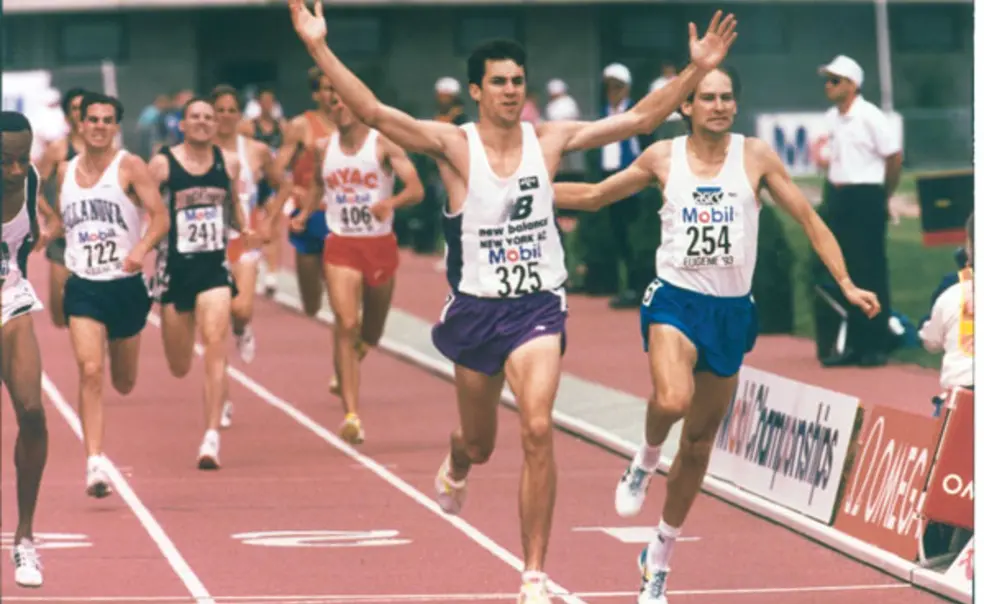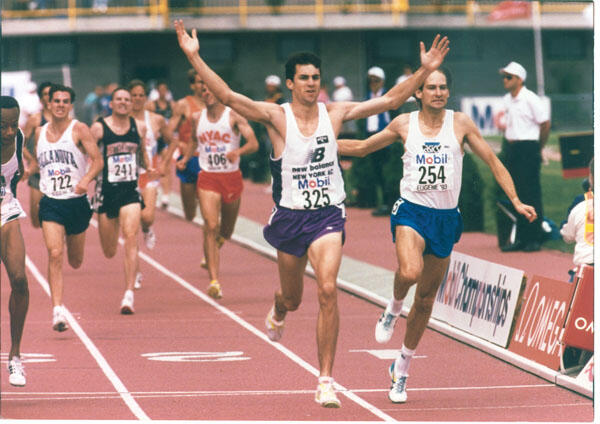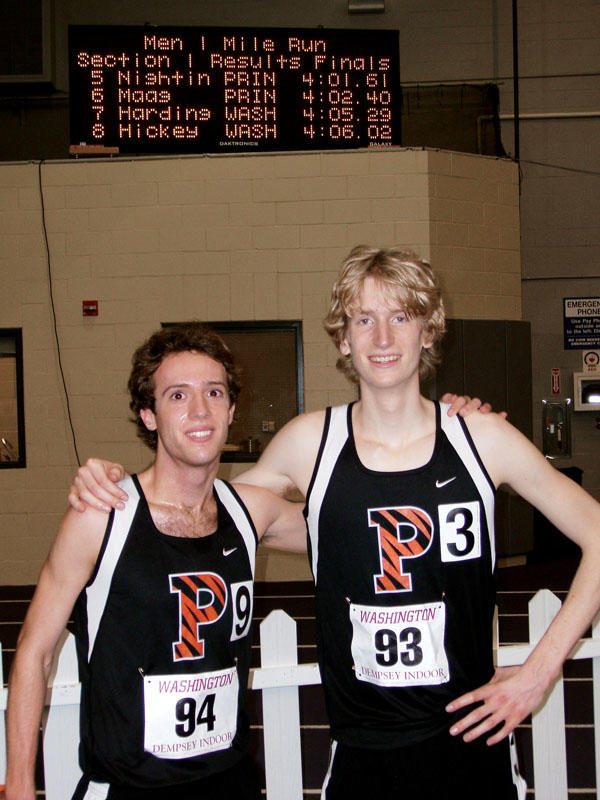Breaking 4:00
A historic barrier still resonates, but today’s stars have fewer chances to run the mile
The mile run holds a special place in the imagination of track fans. “There’s the 100 for speed, the marathon for endurance, and the mile is the perfect mix of both,” says Bill Burke ’91, who is, for now, the only Princeton student ever to break four minutes for the mile, having run 3:58.70 at the 1991 Millrose Games in Madison Square Garden. “It’s got a certain mystique about it.”
Some of that mystique comes from the neat symmetry of the mile’s four quarter-mile laps and the exquisite tension they often create. But it’s also due to the allure of the four-minute barrier, once reckoned to be beyond human achievement. That’s been proved wrong literally thousands of times by now — the world record is 3:43.13 — but four minutes is still one of the few marks in any sport that means something to the average American. “People always ask your mile time — right after they ask you if you’ve ever run a marathon,” notes Michael Maag ’09. “Four minutes will get you street cred.”
Maag is one of three Princeton milers who seem to have a real shot at breaking four minutes this spring — if only they can find a mile to run. Somehow — perhaps as an unintended consequence of our halfhearted attempts to go metric — the mile has begun to disappear. It is still a standard distance at indoor meets, but outdoors, the 1,500 meters, about a football field short of a mile, gets contested almost exclusively. That’s why Princeton’s outdoor mile record, the 4:04.2 Craig Masback ’77 ran in 1977, is so much slower than Burke’s Millrose time: Neither had many chances to run the mile outdoors. (Both would run faster after graduation, Burke clocking 3:56.83 and Masback 3:52.02.)
The difficulty in finding mile races is particularly galling to Princeton track fans this spring, because the Tigers never have had a stronger group of milers. Last year, David Nightingale ’08 and Maag came within a whisker of breaking the magic mark, clocking 4:01.61 and 4:02.40, respectively, at the Husky Classic, an indoor meet in Seattle, while a third, James O’Toole ’08, ran 3:45.69 for the 1,500 meters, roughly equivalent to a 4:04 mile. This year, with Nightingale nursing injuries, Maag returned to the Husky Classic and lowered his best to 4:00.43. An injured foot may prevent him from trying again this year, but he should get another shot next year.
PAW contributor Merrell Noden ’78 ran his best mile in 4:11.2.














No responses yet